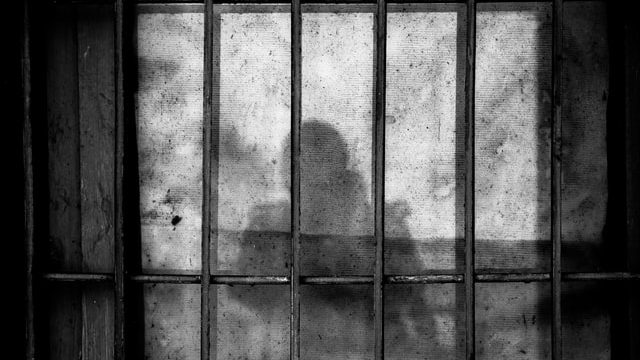
Mary Aileen Diez-Bacalso
On June 26, the United Nations once again commemorated the International Day in Support of Victims of Torture, a day intended to raise awareness of the global phenomenon of torture and to generate collective action to end this scourge.
Coinciding with the entry into force of the Convention Against Torture and Other Cruel, Inhuman and Other Degrading Treatment or Punishment on 26 June 1987, this day was proclaimed to encourage and facilitate full implementation of the treaty.
Loretta Ann Rosales, a former member of the House of Representatives of the Philippines and former chairperson of the Commission on Human Rights, has a poignant recollection of her torture.
“In commemorating the International Day for Torture Survivors on June 26, I am reminded of my personal experience when what kept me strong was the fragrance of a sampaguita flower that a torture agent brought me from Quiapo as part of the can of sardines that I was made to eat after the grueling pain I had suffered that day,” she states.
“It was the fragrance of a delicate flower that was the only thing real to me. It was real because it was a voice of God that whispered in its fragrance. Despite my pain, God was beside me and would never leave me. I have never forgotten the fragrance of that little flower that made me strong against the brutality of the military until my family was able to reach me and to work for my release.”
Many other torture survivors from various countries continue to carry the scars of the pain and trauma inflicted on them by their perpetrators.
It has been 25 years since the proclamation of the UN General Assembly of this significant day. Yet the eradication of torture from the face of the earth is still far from sight
The Convention Against Torture and Other Cruel, Inhuman and Other Degrading Treatment or Punishment has garnered 173 ratifications. By ratifying an international treaty, a state party is legally bound to abide by its spirit and letter. All relevant treaties prohibit torture, so even states that did not ratify the convention are bound to implement it because the prohibition of torture forms part of customary law.
It has been 25 years since the proclamation of the UN General Assembly of this significant day. Yet the eradication of torture from the face of the earth is still far from sight.
The situation in Bangladesh is a microcosm of the global phenomenon of torture. The June 26 statement by a human rights organisation in the country, Odhikar, co-signed by other international rights groups, states that “… at least 90 persons were tortured to death in Bangladesh between November 2013 and May 2022, despite the enactment of the Torture and Custodial Death (Prohibition) Act, 2013 , on October 24, 2013, which criminalises all acts of torture, and despite Bangladesh’s ratification of the UN Convention against Torture and Other Cruel, Inhuman or Degrading Treatment or Punishment (CAT) in 1998. The country’s first-ever verdict under the 2013 Act came in September 2020 when a Dhaka Session Court sentenced three police officers to life imprisonment and two police informers to seven years in prison for the torture and death of a 28-year-old man, Ishtiaque Ahmed Jony, in February 2014. Two of the convicts have absconded and another one fled the country after the verdict. The family members of the victim are still seeking justice and compensation, calling for the arrest of the absconders.”
The Convention against Torture and Other Cruel, Inhuman and Other Degrading Treatment or Punishment defines torture as “any act by which severe pain or suffering, whether physical or mental, is intentionally inflicted on a person for such purposes as obtaining from him or third person information or a confession, punishing him for an act he or a third person has committed or is suspected of having committed, or intimidating or coercing him or a third person, or for any reason based on discrimination of any kind, when such pain or suffering is inflicted by or at the instigation of or with the consent or acquiescence of a public official or other person acting in an official capacity. It does not include pain or suffering arising only from, inherent in or incidental to lawful sanctions.”
The feelings of families of desaparecidos [the disappeared], swinging between hope and despair, are equated to psychological torture. The agony of waiting, the fear of torture, the possibility of death, the suffering from an uncertain loss, and the absence of closure are tantamount to psychological torture
I have worked and continue to work with survivors of enforced disappearances and torture. These human rights violations are related. Many victims of enforced disappearances who surfaced alive to tell their stories were tortured.
My husband, Edsil Bacalso, who disappeared briefly a couple of months after our marriage, was mauled, deprived of food and sleep, and forced to sign an affidavit to “confess” that he was a member of the Communist Party of the Philippines.
Together with another disappeared, he was told to dig his own grave to be buried alive. Thanks to the other person, who managed to escape and inform us about my husband’s whereabouts, the military released my husband in a cemetery near his parents’ house.
The feelings of families of desaparecidos [the disappeared], swinging between hope and despair, are equated to psychological torture. The agony of waiting, the fear of torture, the possibility of death, the suffering from an uncertain loss, and the absence of closure are tantamount to psychological torture.
The act of torture, therefore, is an act against the Creator, in whose image and likeness, humanity is created. Corollary to this is that torture tramples upon the rights of the human beings, who, created by God, are to be treated with respect
Placed outside the protection of the law, the disappeared person is put in a situation of complete defenselessness, thus deprived of access to legal remedies. In this situation, the risk of torture is rather high.
Torture survivors need holistic healing, yet few of them can go beyond the trauma. Loretta Ann Rosales is one of those who have been transformed from being victims into human rights defenders.
Sharing her reflections on this important day, she said: “I have survived the brutality of the Marcos years. Forty-six years after, I continue to teach the core human rights treaties drawn from the 1948 Universal Declaration of Human Rights. One of these is the Convention Against Torture that became enforceable on 26 June 1987—42 years after the end of World War II in 1945. It took four decades from the brutality of a global war before torture became an international crime and yet there is much work that awaits all of us under our present system of rule where democratic processes have been eroded in these last six years.”
A moral issue, torture degrades both victims and perpetrators.
Catholic teaching states that every person is made in God’s image and likeness. Inflicting pain against a human being is against Catholic teachings.
The Catechism of the Catholic Church states that “torture which uses physical or moral violence to extract confessions, punish the guilty, frighten opponents, or satisfy hatred is contrary to respect for the person and for human dignity” (No. 2298).
Torture, as an anathema to the human family, is a relevant issue to the formation of the greater human family.
The act of torture, therefore, is an act against the Creator, in whose image and likeness, humanity is created. Corollary to this is that torture tramples upon the rights of the human beings, who, created by God, are to be treated with respect.
Torture likewise victimises the perpetrators and the larger society that permits it. A human being is both sacred and social. Considering that human beings are interdependent, the things they do to one another are ultimately also being done to themselves. A society that allows torture threatens the common good of its members.
The Year of the Family, established by Pope Francis to strengthen faith in family life, ended with the conclusion of the 10th World Meeting of Families in Rome. Torture, as an anathema to the human family, is a relevant issue to the formation of the greater human family.
On this significant day for torture survivors, the Catholic Church should reiterate its stance against torture, a crime against humanity that should never again be committed in our supposedly civilised world.
Mary Aileen Diez-Bacalso is a human rights activist and journalist based in Manila and contributes columns to international publications, mostly highlighting right issues in Asia. Currently, she is president of the International Coalition Against Enforced Disappearances (ICAED).
The views expressed in this article are those of the author and do not necessarily reflect the official editorial position of UCAN.








